Anyone who has experienced migraines, tension-type headaches, or chronic headaches knows that the pain pattern is highly irregular. Sometimes it is not seen for days, while at other times it appears suddenly. Doctors often recommend maintaining a headache diary to aid diagnosis. But it is really difficult to find a headache diary that is structured to write down many parameters. To meet that need, we created a collection of more than 45 headache-diary templates.
Table of Contents
Design Logic of the TypeCalendar Template Collection
![Free Printable Headache Diary Templates [PDF, Excel] 1 Headache Diary](https://www.typecalendar.com/wp-content/uploads/2023/09/Headache-Diary.jpg 1920w, https://www.typecalendar.com/wp-content/uploads/2023/09/Headache-Diary-300x169.jpg 300w, https://www.typecalendar.com/wp-content/uploads/2023/09/Headache-Diary-1024x576.jpg 1024w, https://www.typecalendar.com/wp-content/uploads/2023/09/Headache-Diary-768x432.jpg 768w, https://www.typecalendar.com/wp-content/uploads/2023/09/Headache-Diary-1536x864.jpg 1536w, https://www.typecalendar.com/wp-content/uploads/2023/09/Headache-Diary-640x360.jpg 640w, https://www.typecalendar.com/wp-content/uploads/2023/09/Headache-Diary-1200x675.jpg 1200w)
Headache diaries, “when did the pain start?” should contain more than questions: environmental conditions, physiological parameters, and emotional state. For this reason, we have divided more than 45 templates into three data sections headache diaries, “when did the pain start?” it should contain more than quest diaries, “when did the pain start?” it should contain more than questions: environmental conditions, physiological parameters an headache diaries, “when did the pain start?” it should contain more than questions: environmental conditions, physiological parameters and emotional state. Therefore, we organized the 45 + templates into three data sections.
- Section 1: Record the time of onset and pain intensity.
- Section 2: log potential triggers—sleep (hours), caffeine (mg), barometric pressure, and stress score.
- Section 3: document outcomes—drug dose, duration of action, side effects, and recovery notes.
This structure lets your entries reveal causal chains rather than random events.
We have also preset the margins and line spacing in all the templates. You can easily print them on a home printer or a photocopier, and the lines will never be cut. We have also preset the margins and line spacing in all the templates. You can easily print them on a home printer or a photocopier, and wish.
Headache Diary Templates
How to Use a Headache Diary Effectively
To capture accurate data, jot brief notes as soon as the first twinge hits; in the evening, check off the day’s triggers—sleep, caffeine, stress, and so on. With height, after a few weeks, you will have clear data showing which days, which weather conditions, or which meals bring the pain. Your diary will also guide your physician in pinpointing the root cause of your pain.
Download Your Free Template Today!
All templates in our Headache Diary collection are 100% free to use. You can easily download the PDF, Word, or Google Sheets file that suits your needs. By using our templates, you’ll gather clear data from regular entries in just a few weeks. You’ll then have detailed, 100% accurate information to bring to your doctor’s appointments.



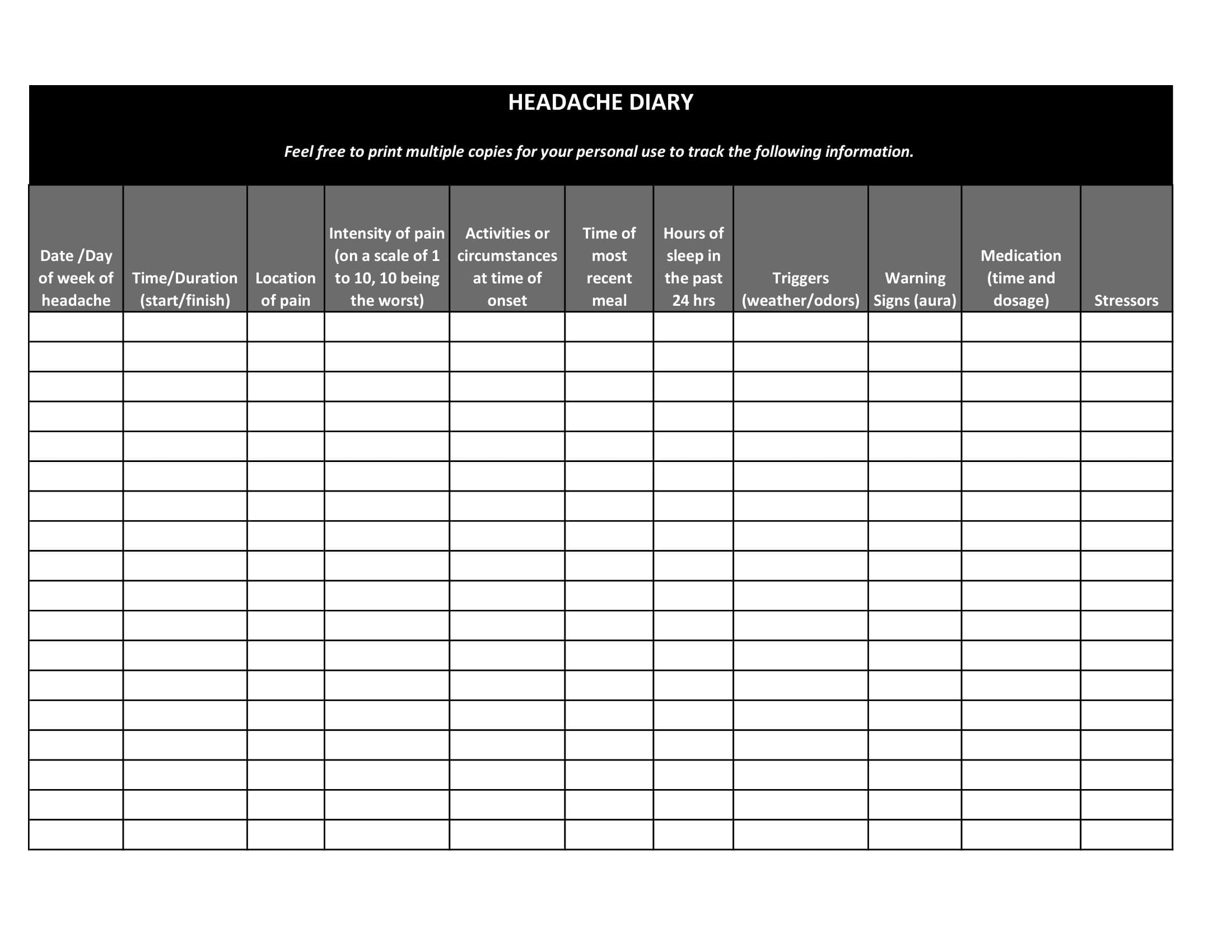
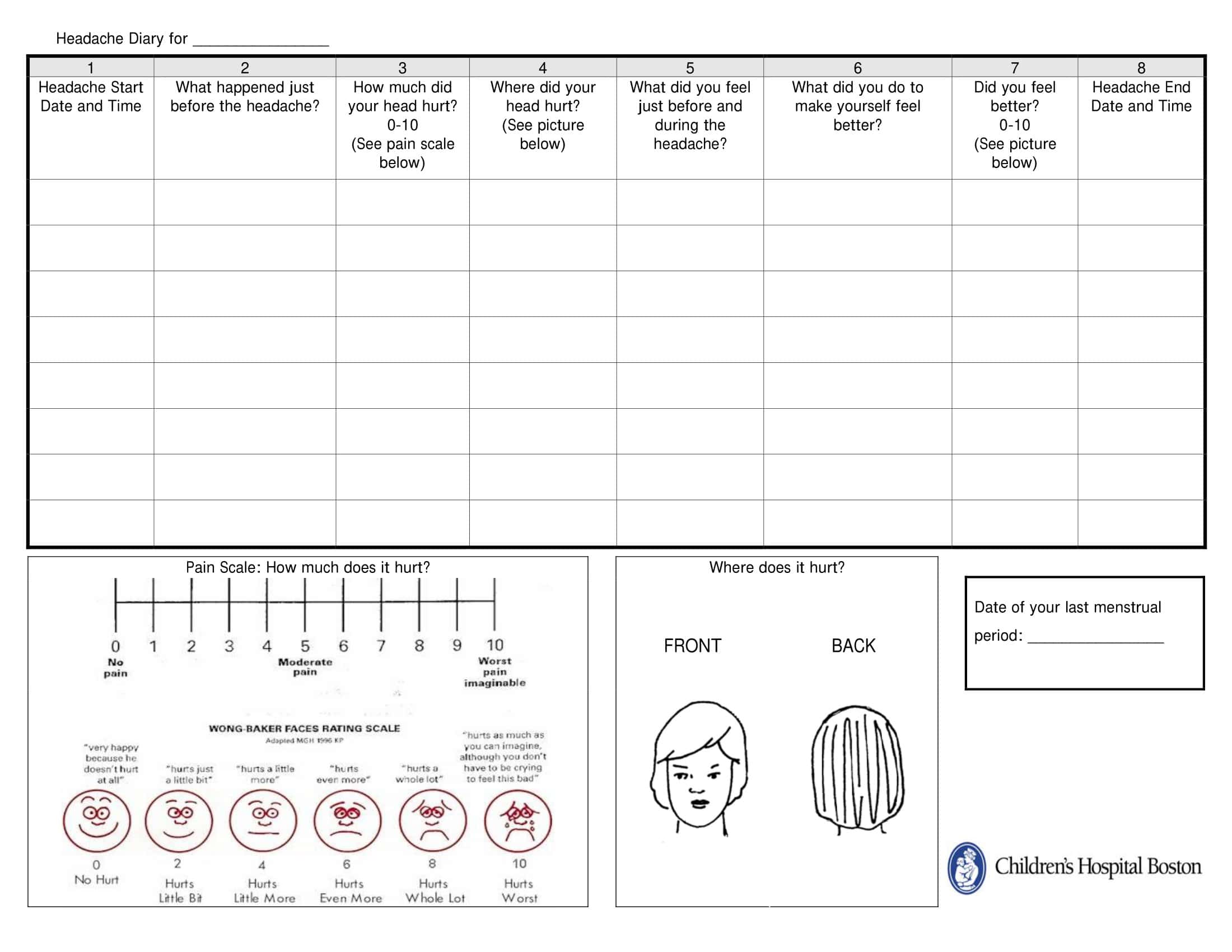
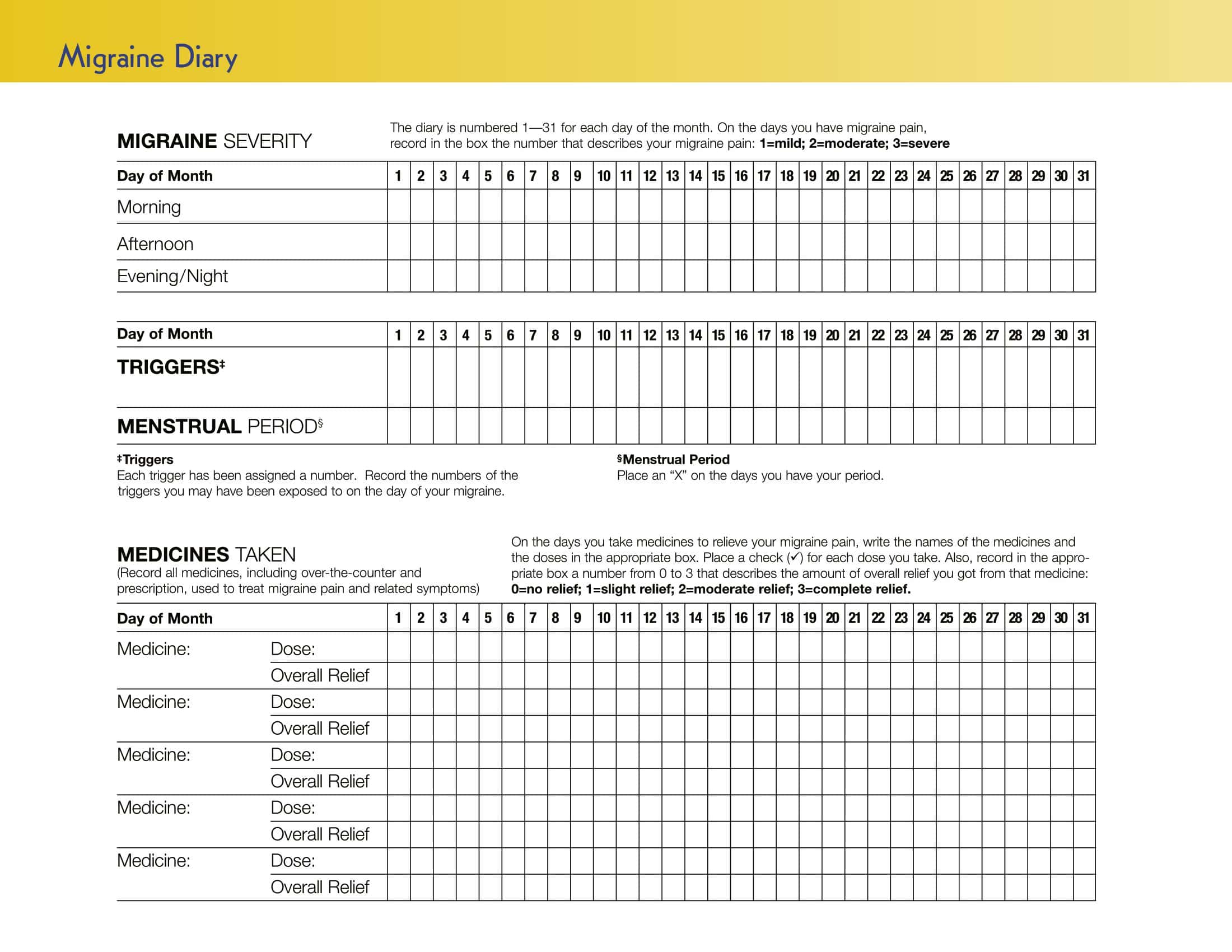













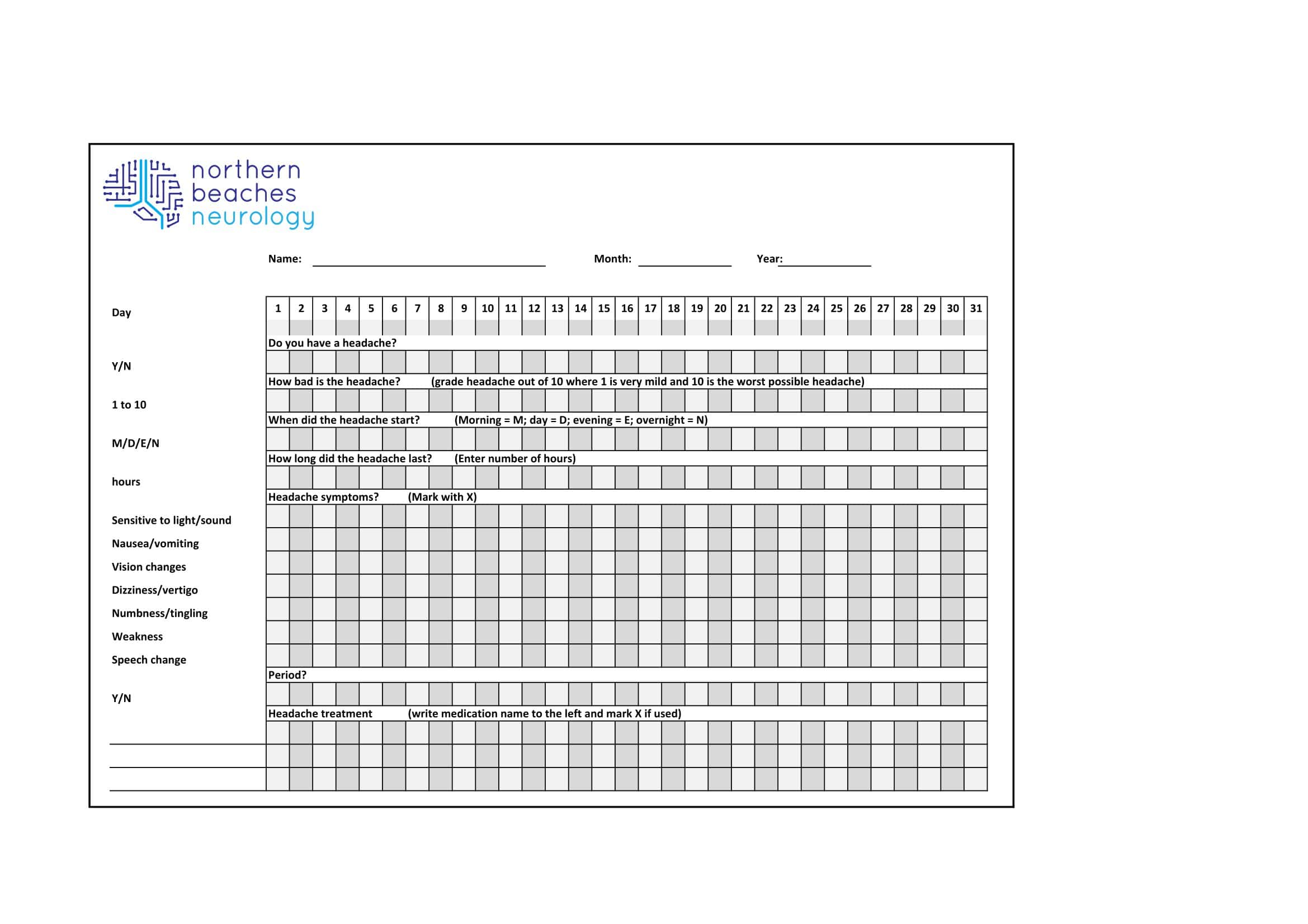

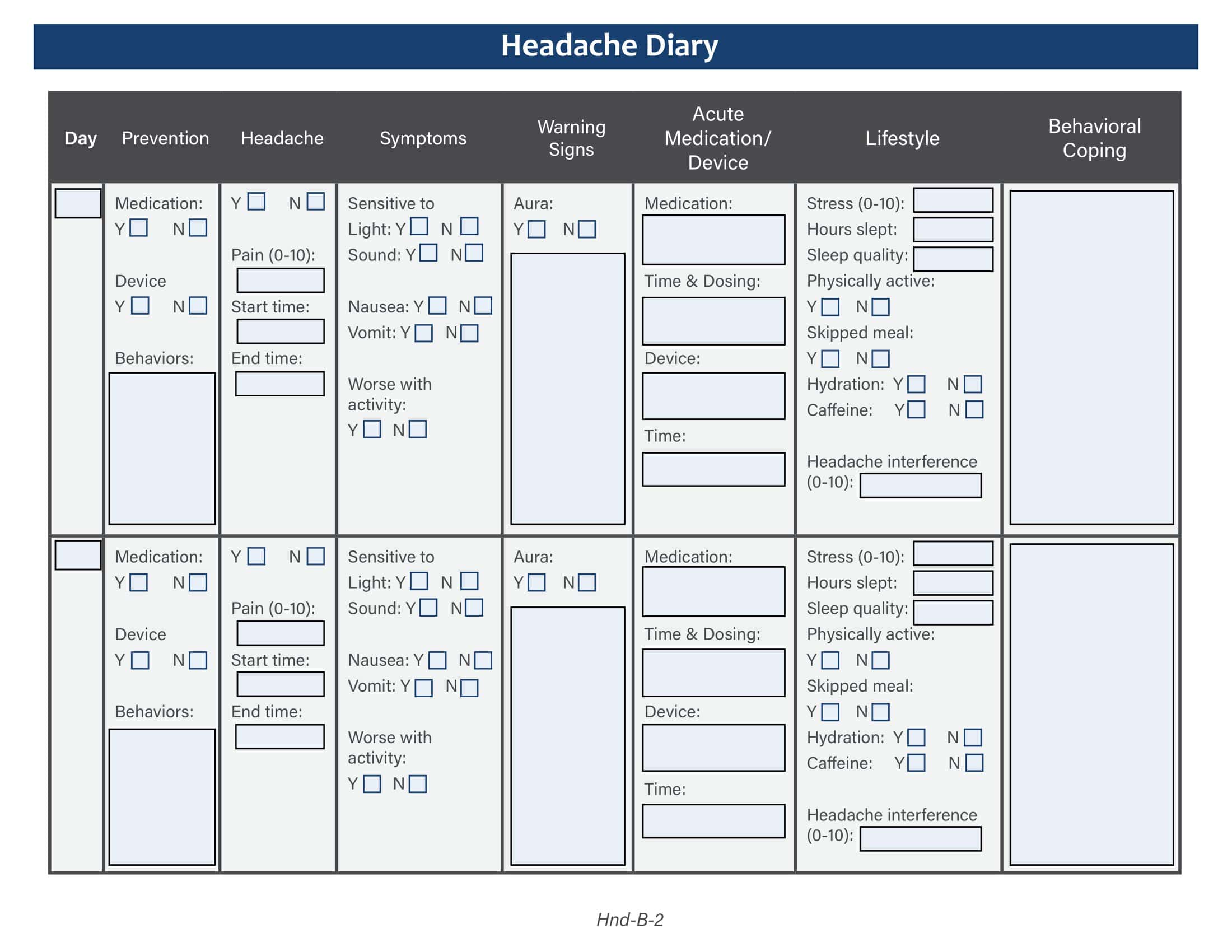
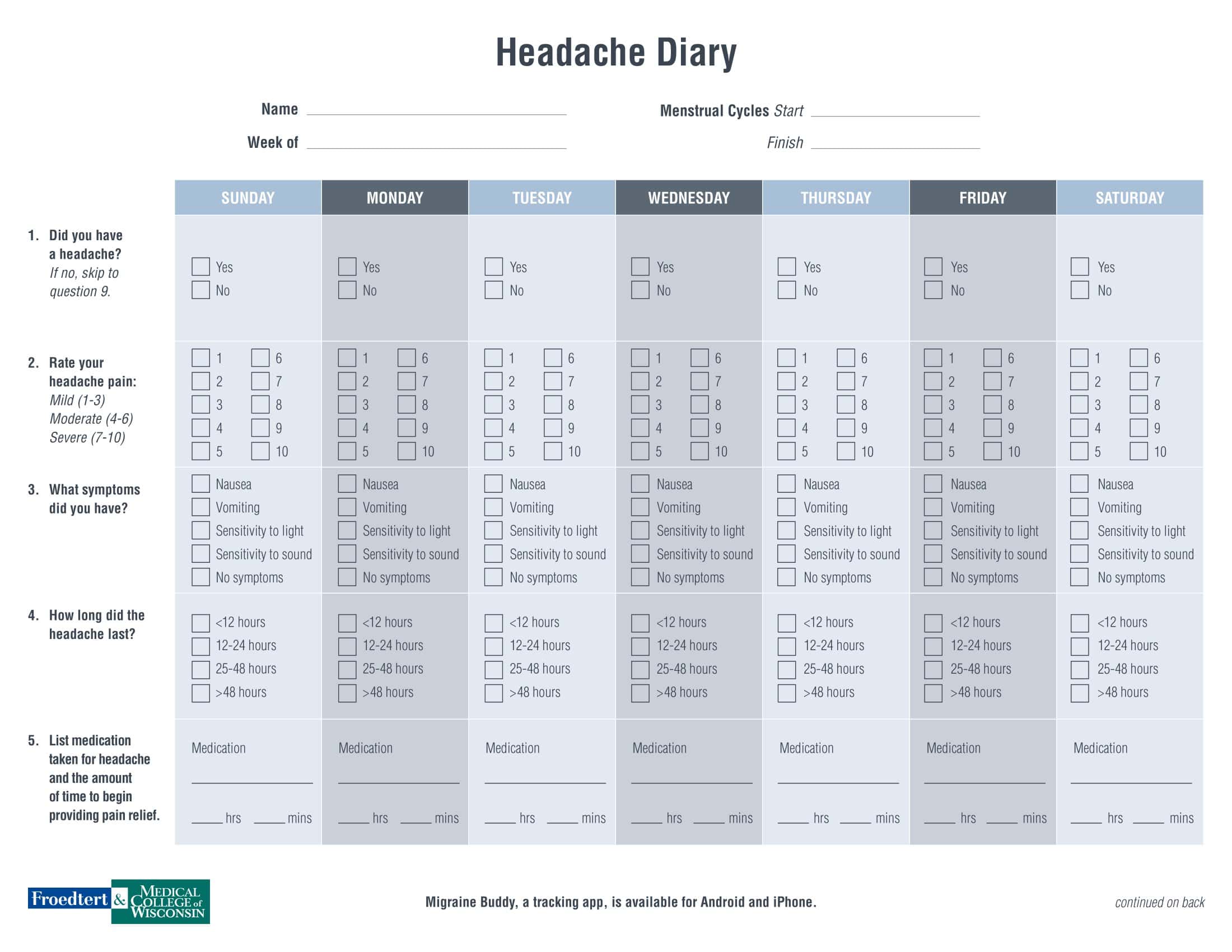























![%100 Free Hoodie Templates [Printable] +PDF 2 Hoodie Template](https://www.typecalendar.com/wp-content/uploads/2023/05/Hoodie-Template-1-150x150.jpg)
![Free Printable Food Diary Templates [Word, Excel, PDF] 3 Food Diary](https://www.typecalendar.com/wp-content/uploads/2023/05/Food-Diary-1-150x150.jpg 150w, https://www.typecalendar.com/wp-content/uploads/2023/05/Food-Diary-1-1200x1200.jpg 1200w)
![Free Printable Roommate Agreement Templates [Word, PDF] 4 Roommate Agreement](https://www.typecalendar.com/wp-content/uploads/2023/06/Roommate-Agreement-150x150.jpg)
